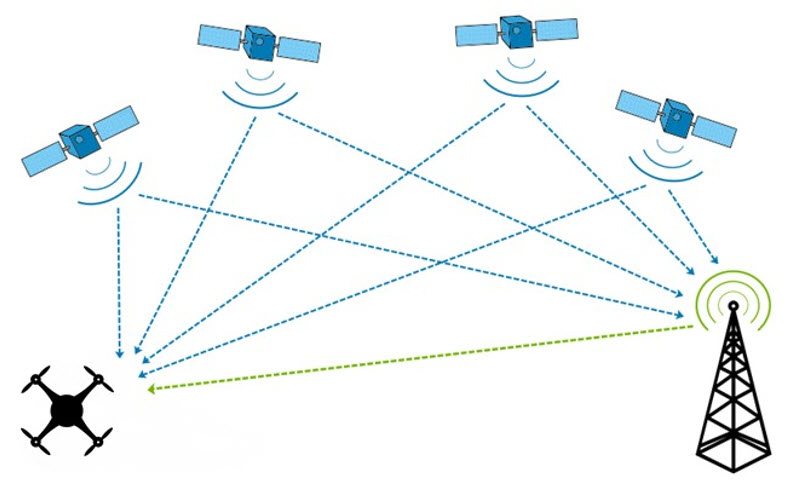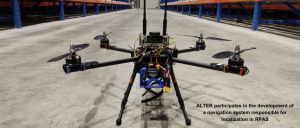These terms are closely related to drones and influence their performances.
First of all, we will explain what a Global Navigation Satellite System (GNSS) is. A constellation of satellites provides geospatial positioning with global coverage, both autonomously and with augmentation systems. The positioning and timing data are received by receivers which use this data to determine location.
A minor interference source would be able to cause a failure in the receiver or misleading information. These failures or threats may be unintentional, but sometimes, they are deliberated. They can be related to environmental conditions, emitting system errors, receiving system errors, human factors, and unwanted RF emissions.
Jamming and Spoofing are two intentional interference techniques.
Jamming consists of emitting RF signals with specific properties and higher power than the target signal to overpower the GNSS signals receiver causing the total or partial block of the reception of the latter one.
There is a type of jamming called ‘’meaconing’’ that is only needed to tune into the accurate GNSS signals, record them, and then retransmit them after an unavoidable delay and more power to confuse the receiver. It is essential to highlight that there is no control over the variables, time, and position, which it calculates.


To simplify, jamming causes the receiver to die. The inhibitor system causes side effects on other systems too.
Spoofing is the provision of GNSS-like signals locally transmitted and coded to fool the receiver. A device sends a movement analogous to the satellite signal, but which higher power, so the GNSS receives the false signal instead of the real one; in such a manner, it calculates an incorrect position or an incorrect time variable.
There is a type of spoofing called a ‘’carry-off attack’’ that is caused by broadcasted signals synchronized with genuine signals observed by the target receiver. The power of the counterfeit signals is gradually increased, so that, the GNSS receiver tracks the false signals which can be manipulated giving a different location to the provided by genuine signals.
To simplify, spoofing causes the receiver to lie being this attack more complex than a jamming attack.
Fortunately, both attacks have mitigation measures or solutions such as jamming detectors, inertial devices, notch filters, radio spectrum monitoring, encryption, among other things.
The use of GNSS receivers is widespread in drones and other systems, for this reason, the use of anti-jamming and anti-spoofing protection and other strategic mitigation measures is essential to avoid these threats ensuring the correct operation of any system.




